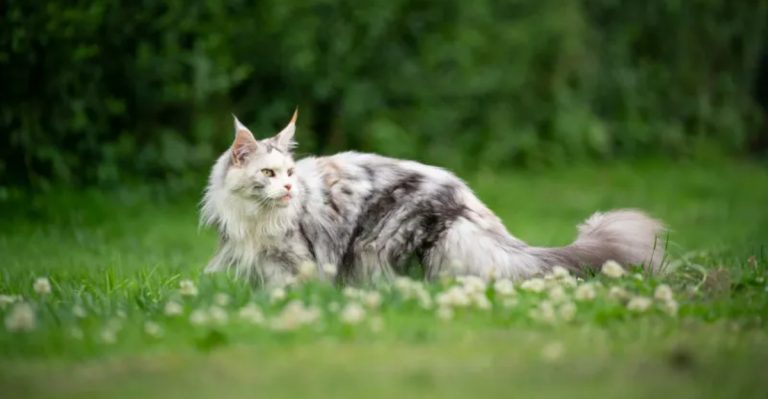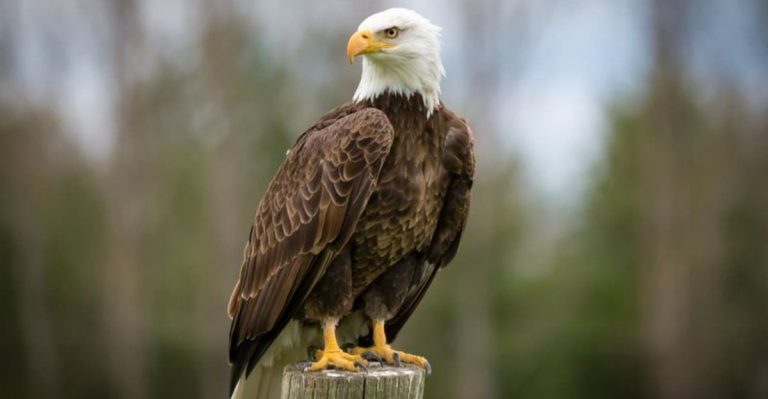Gorgeous Yellow Birds You Can Spot In North Carolina
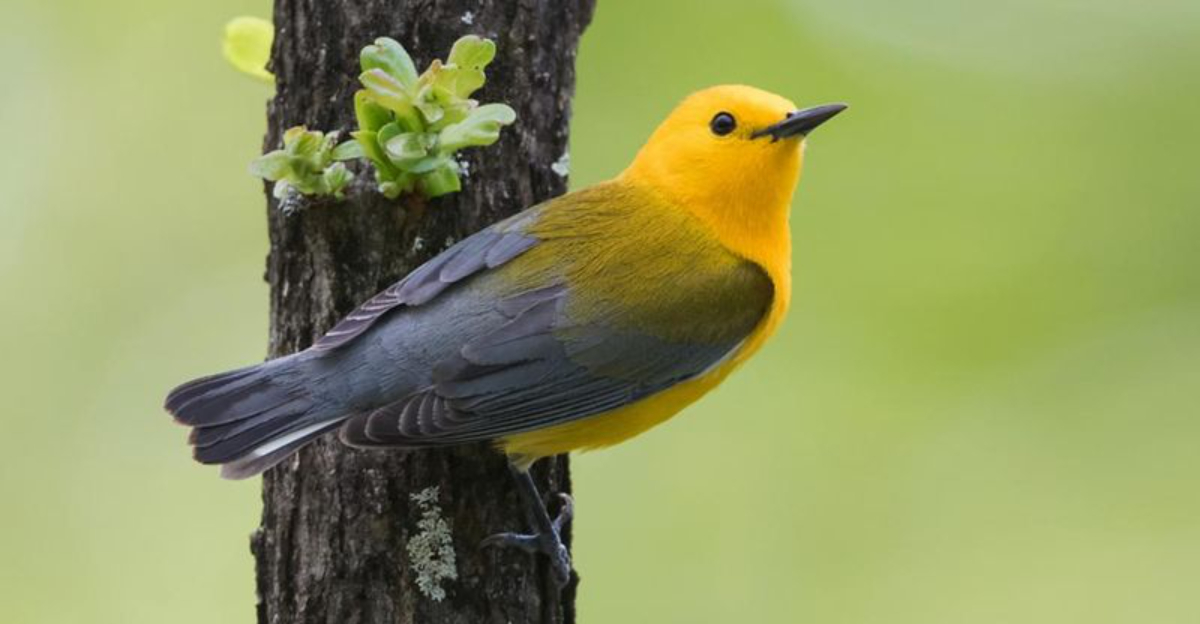
North Carolina’s diverse landscapes create the perfect habitat for a stunning array of yellow-feathered birds. From lush forests to suburban backyards, these golden beauties add splashes of sunshine to our natural world. Whether you’re an experienced birder or just enjoy watching wildlife from your window, these vibrant yellow birds will brighten any day with their colors and melodies.
American Goldfinch
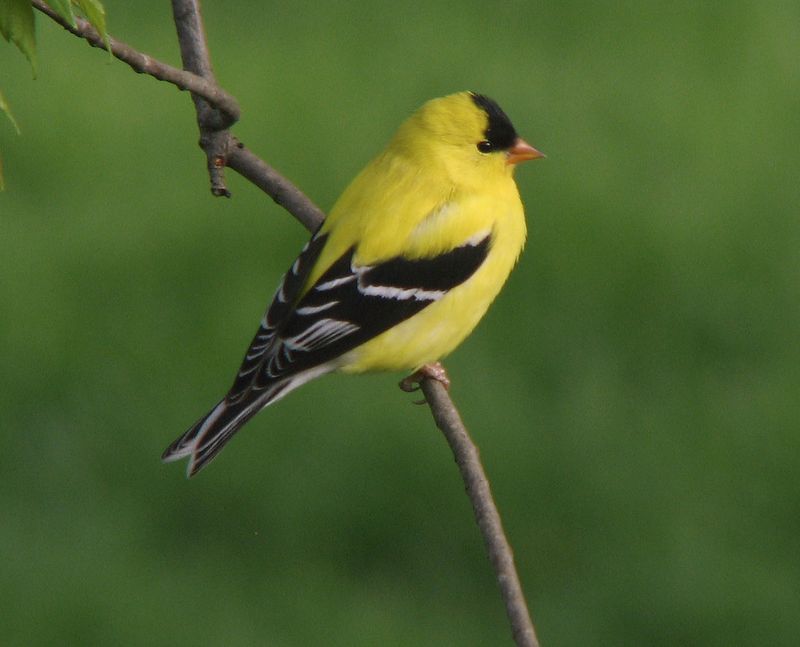
Bright as a lemon drop, these tiny acrobats perform aerial ballet while hunting for seeds. Males sport brilliant yellow plumage during summer months, contrasting beautifully with black wings.
Females and winter males wear more subdued olive-yellow coats. Listen for their sweet, canary-like warbling calls in open meadows and backyard feeders.
Yellow Warbler
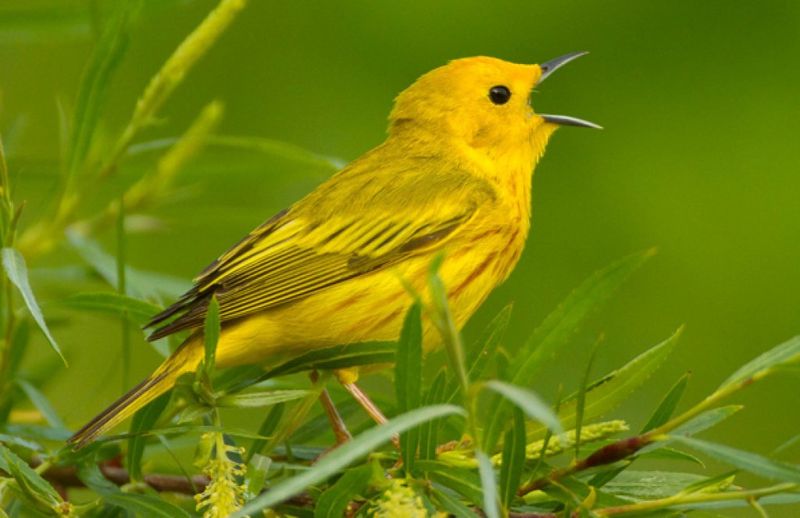
Sunshine in feathered form! Males flaunt brilliant yellow bodies with reddish streaks on their chests, while females wear a softer yellow. These cheerful songsters build cup-shaped nests in shrubs near water.
Their sweet “sweet-sweet-sweet-sweeter-than-sweet” melody echoes through North Carolina’s streamside thickets from spring through early fall.
Eastern Meadowlark
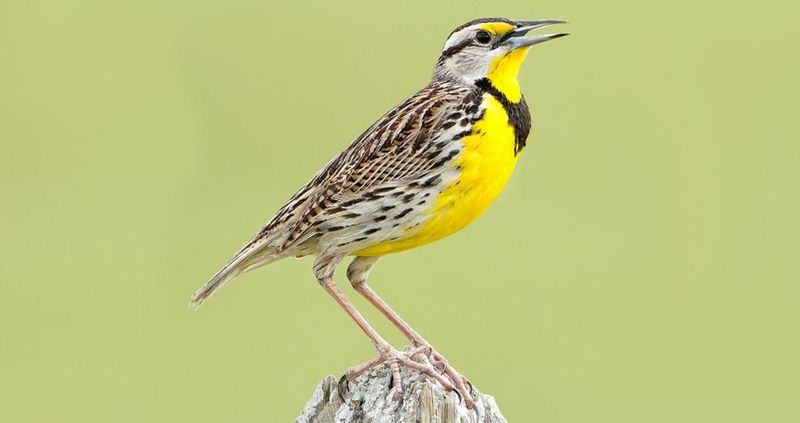
Fields come alive when this grassland vocalist performs! Sporting a brilliant yellow chest marked with a distinctive black V, meadowlarks blend perfectly with their grassy homes when viewed from above.
Their flute-like whistle carries across North Carolina’s open spaces. Despite their bright colors, these ground-nesters can be surprisingly difficult to spot until they take flight.
Prothonotary Warbler
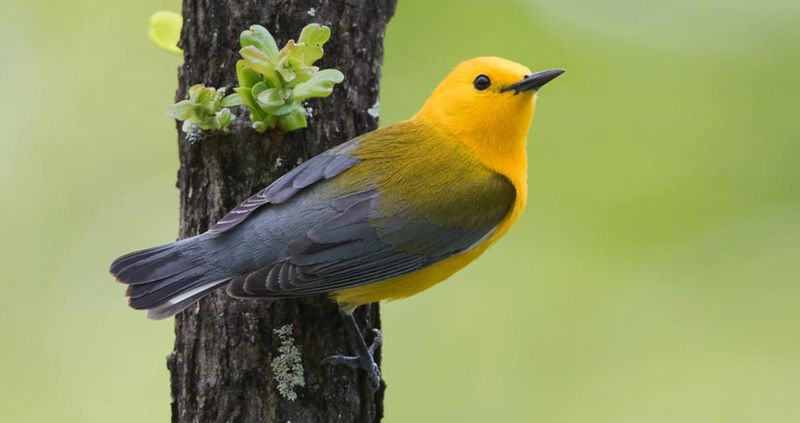
Golden jewels of Carolina’s swamps! These cavity-nesters illuminate dark wetland forests with their unmistakable golden-yellow heads and bodies. Unlike most warblers, they prefer nesting in tree holes near water.
Their sweet, repetitive “tweet-tweet-tweet” calls echo through cypress swamps and flooded forests. Look for them along the coastal plain and Piedmont region’s waterways.
Common Yellowthroat
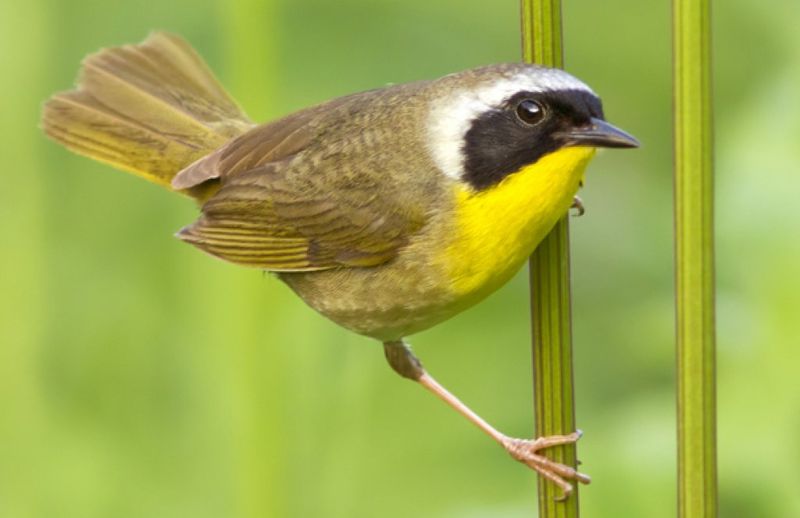
Masked bandits of the marshes! Male yellowthroats wear a distinctive black mask across their eyes that makes their bright yellow throats pop against olive-green bodies. These secretive birds prefer hiding in dense vegetation.
Their distinctive “witchity-witchity-witchity” call reveals their presence in marshes and wet meadows across North Carolina, even when these shy birds remain hidden from view.
Yellow-breasted Chat
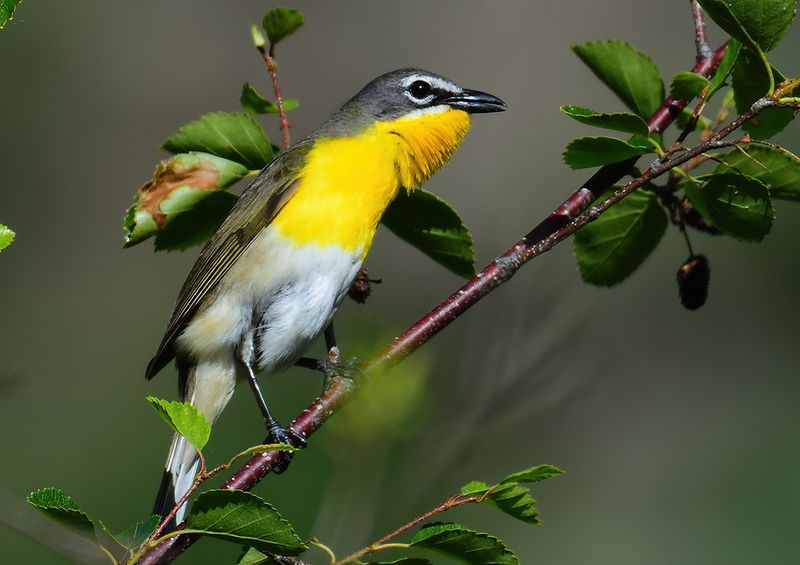
Nature’s comedians put on quite a show! These large warblers combine yellow breasts with olive backs, white spectacles, and oversized personalities. During breeding season, males perform bizarre flight displays while vocalizing an odd mix of whistles, cackles, and grunts.
Find these vocal acrobats in tangled thickets and woodland edges throughout North Carolina from late spring through summer.
Pine Warbler
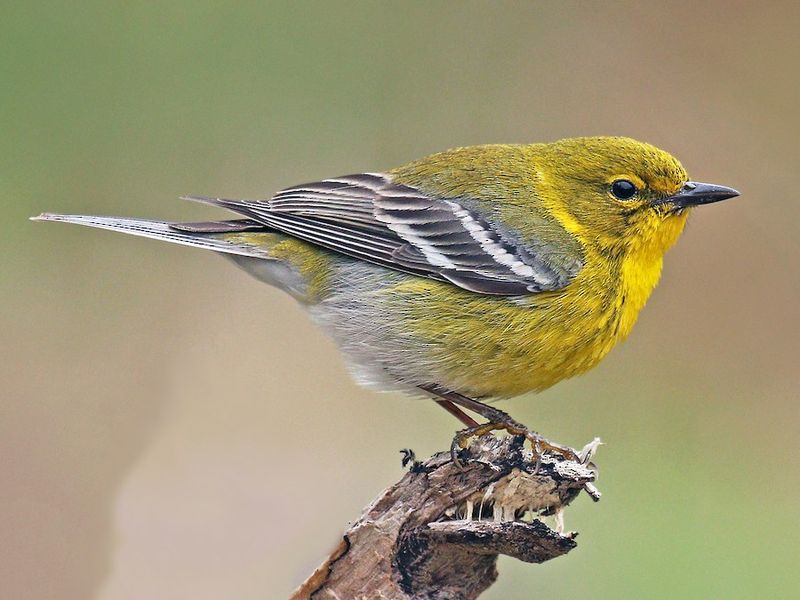
Floating yellow dots among evergreen needles! These yellow-breasted songbirds with olive backs are among the first warblers to arrive in spring and the last to leave in fall. Unlike their warbler cousins, they readily visit bird feeders for sunflower seeds.
Their trilling song cascades through North Carolina’s extensive pine forests, where they spend most of their time foraging high in the canopy.
Orchard Oriole
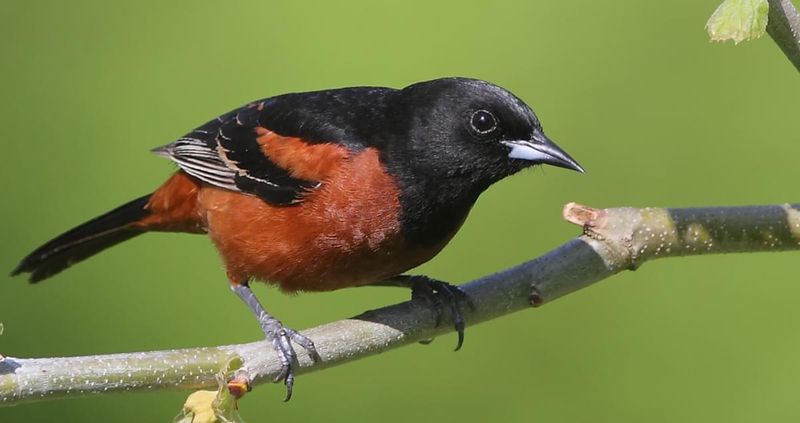
Fiery personalities in compact packages! Male orchard orioles sport rich chestnut-red bodies with black heads and backs, while females and immature males show bright yellow-green plumage. Their hanging pouch nests sway from tree branches in open woodlands.
Listen for their whistling melodies in North Carolina’s orchards, parks, and riverine forests during summer months before they head south for winter.
Hooded Warbler
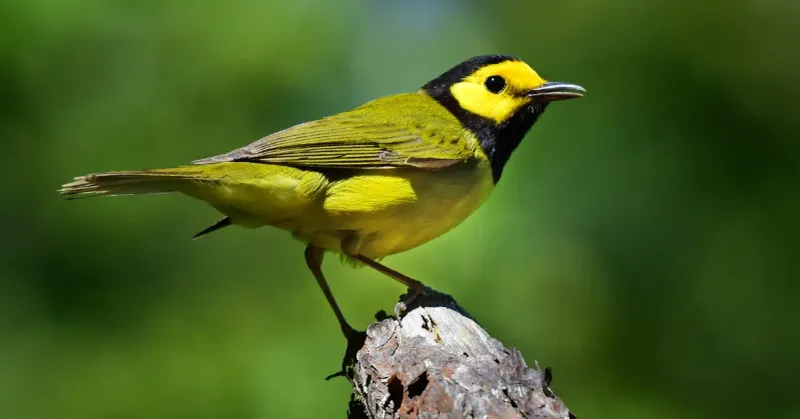
Flashy forest dwellers with attitude! Males sport a striking black hood surrounding a golden face, contrasting beautifully with their bright yellow underparts. These understory specialists prefer the shadowy realms beneath mature forests.
Their distinctive “weeta-weeta-weetio” song rings through North Carolina’s deciduous woodlands. Watch for their habit of flicking their tails open to reveal white outer tail feathers while foraging.
Yellow-throated Vireo
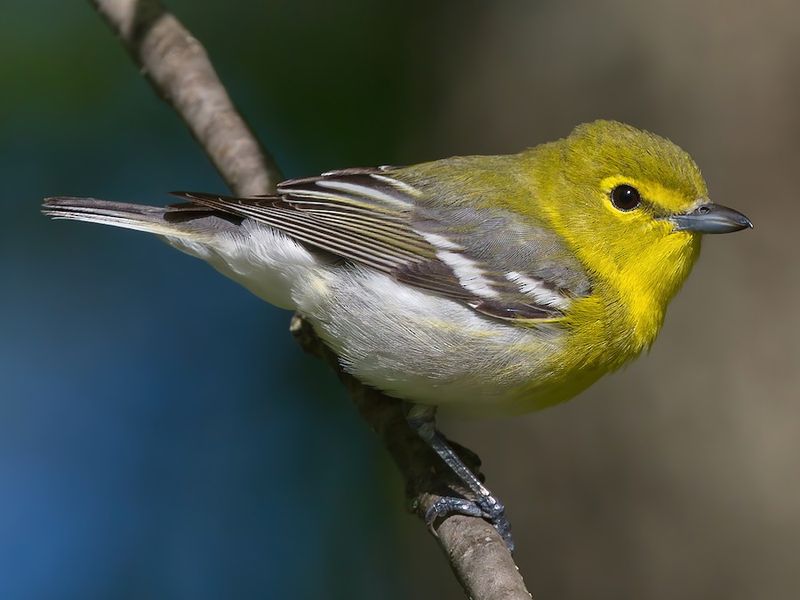
Canopy-dwelling gems with leisurely habits! These deliberate foragers display bright yellow throats and spectacles against olive-green backs and white bellies. Unlike the hyperactive warblers, vireos move methodically through treetops searching for insects.
Their rich, burry songs sound like they’re asking and answering questions. Find them in mature deciduous forests and riparian woodlands across North Carolina from spring through early fall.



